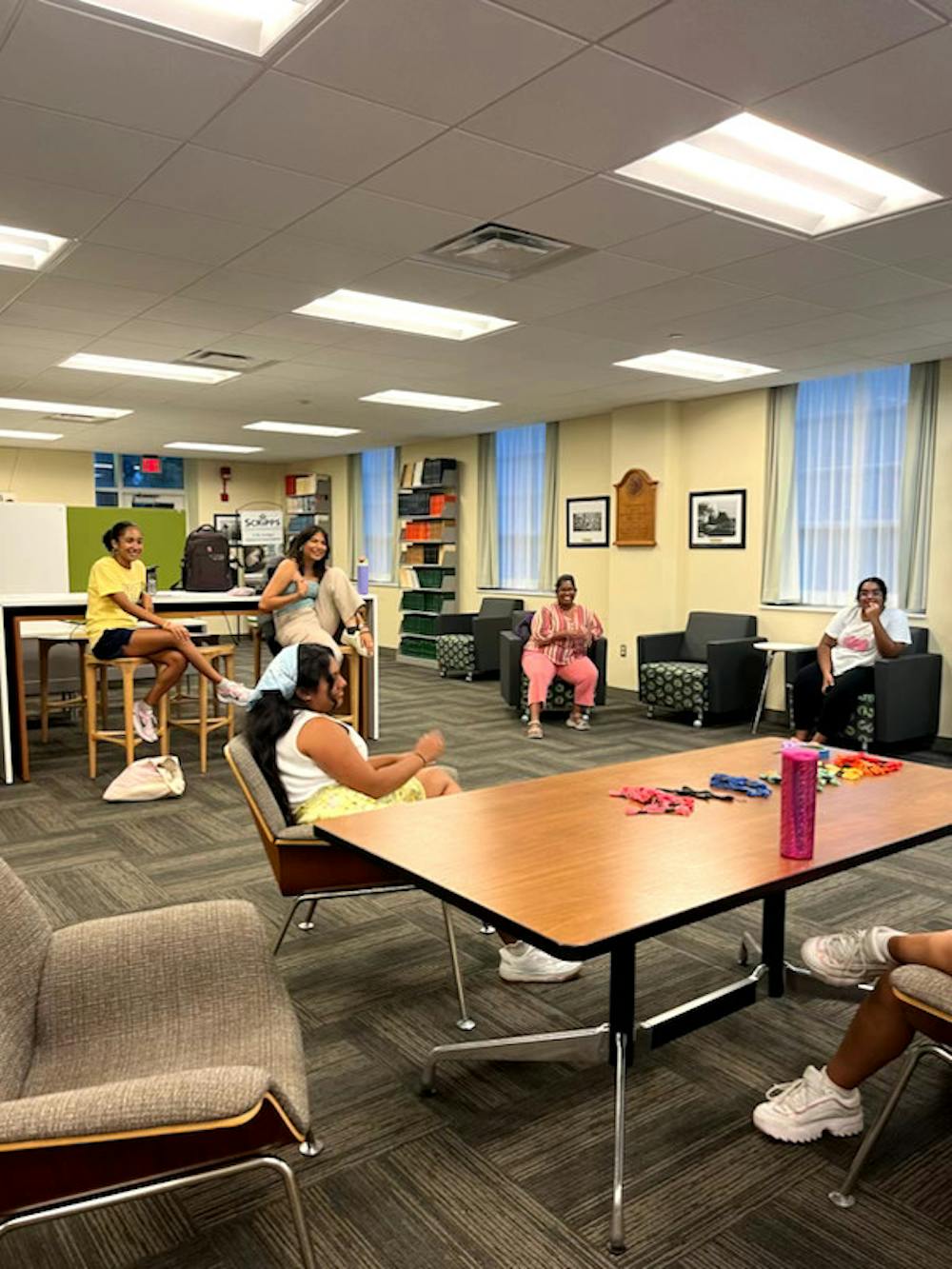Last year, Anne Mathew, a junior studying neuroscience, founded Ohio University’s South Asian Student Association, or SASA. Since then, the organization has flourished into a community brimming with culture, friendship and support.
The South Asian Student Association continues to be a catalyst for cultural pride, support and friendship. This year, the group looks forward to a number of fun cultural celebrations, dinners and more.
Yashvita Kanuganti, a sophomore studying linguistics as well as the group’s treasurer, described the intention behind SASA.
“Our main mission is to create a shared group—a community—for South Asian students on campus,” Kanuganti said. “There aren’t many of us so, I think having a center where we’re able to meet and have events and talk is important.”
The group of about 10 members not only meets biweekly but also hosts cultural celebrations such as Holi, a Hindu festival of color that happens each spring. Last semester, the group joined in on the lively tradition of throwing colored powder at each other, an act symbolizing good triumphing over evil.
For many members, such as Mathew, the event also served as a way to connect with unfamiliar aspects of South Asian culture.
“Being South Indian and Christian, I actually had never celebrated Holi or Diwali until I came here, so it’s really fun for me,” she said. “I know I wasn't the only person who hadn’t celebrated Holi, so being able to be someone to provide the opportunity for everyone else who hasn’t had the chance to is really cool.”
This year, the group plans on hosting even more events than last year such as Diwali, which is the festival of lights, and Garba, a Gujarati folk dance, along with potlucks and fashion shows.
Apart from fun festivities, SASA also provides a space where its members can connect with each other. Reebha Chetty, a junior studying exercise physiology and a member of SASA, described her experience coming to OU as a South Indian student.
“In my hometown, even though it’s in Ohio, there’s a good amount of people that look like me or have similar experiences as me,” she said. “I don’t really feel too alienated back at home. Then I got here, and I really had trouble finding people that looked like me; I could go a whole day, walking around campus and not see a single person of color.”
SASA actively works against this feeling of isolation by creating a space where students don’t feel like minorities. Mathew said this aspect of the group is a relief from social pressure.
“Being able to have a group of brown friends and not trying to put on an act for white people anymore is really liberating,” she said.
Going to a predominately white institution, many students of color feel pressure to conform to the overwhelming cultural majority. According to the Ohio University Historical Headcount by Race Ethnicity, around 2% of Asian American students made up the student population in 2020. SASA encourages students experiencing this pressure to embrace their heritage. Although doing so can be uncomfortable.
Outside of group meetings, many students of color deal with harassment and a number of microaggressions from others who are simply uneducated. Harmful actions can be as simple as a judgy glance but, sometimes, they’re much more direct. Mathew spoke about her experience with these issues as a South Asian woman in particular.
“There are large distinctions between being a man of color versus a woman of color,” she said. “Women of color tend to be fetishized and sexualized. I’ll literally just be walking down the street and it’s like ‘Oh my God, she’s so exotic’ and statements like that, especially if I’m with my other female friends of color. It’s almost like people haven’t seen more than one at the same time before.”
As if being mistreated for being brown isn’t bad enough, Mathew, who’s from Kerala, India, recalls several occasions where people don’t perceive her Catholic name, Anne, as “brown enough.”
The group works to uplift the voices of minority students against stigmas like this one, rooted in ignorance. Kanuganti’s advice to other students on campus regarding racial stigmas is to be open.
“Keep an open mind … because there are so many things out there that you just don’t know anything about, that you’ll really resonate with if you just hear about them,” she said.
For students interested in being a part of the organization or staying up to date on upcoming events, follow SASA’s Instagram: @ohiosasa. The group is available to students of all backgrounds who are interested in learning about South Asian culture.






